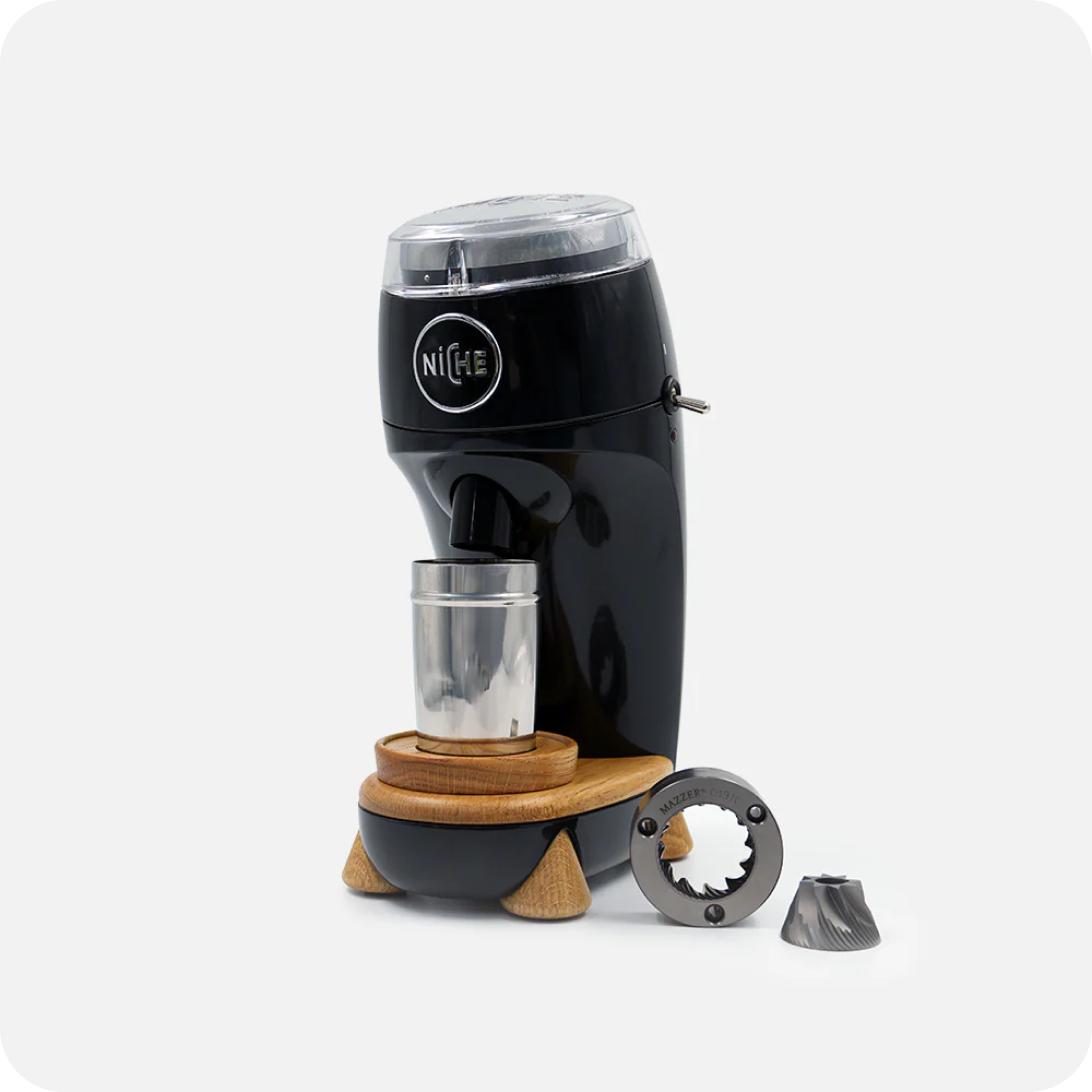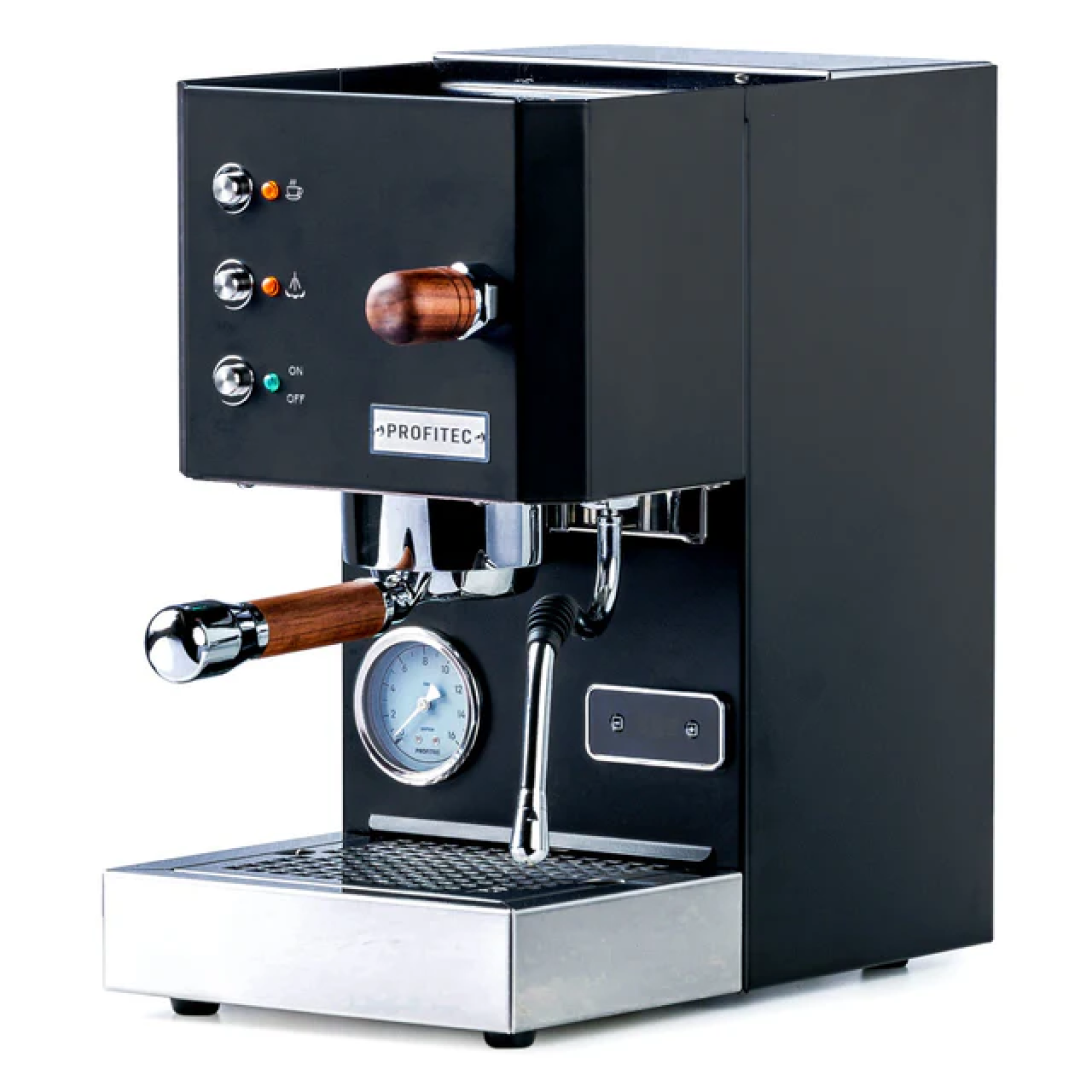Recently, my wife and I decided that we wanted to enter the world of home espresso. We moved out to a 3 acre property about 25 minutes outside of Portland, so our proximity to (good quality) coffee shops has been a factor. If we can't walk to a local coffee shop, why not get a machine and learn to make some great coffee at home?
As it turns out, there are many warnings about diving into this world; making espresso at home is expensive, time consuming, and kind of a pain in the ass. Of course, we read the warnings and thought "This won't be a problem for us! Let's do it!" Our journey began...
The Grinder
Why am I starting by talking about a coffee grinder? Isn’t this post about a home espresso machine? I’m glad you asked.
When it comes to brewing espresso at home, having a good grinder is perhaps the most important element in your setup. If you grind your coffee too coarse, your shots pour much too quickly and are under extracted, resulting in coffee that’s weak and sour. On the other hand, if you grind your coffee too fine, your shots will pour too slowly and are over extracted, resulting in coffee that’s bitter and harsh.
The best way to ensure your grind is the right size is to invest in a proper espresso grinder. There are many fantastic machines out there these days, and we debated between a few machines: The Turin DF64S, the Timemore Sculptor 064S, and the Niche Zero. Each are burr grinders that feature low retention, which is quite important when you’re making espresso. Let’s briefly talk about each and which one we decided on…
Turin DF64S

The Turin was the cheapest option of the grinders, and for the price seems to be a quality grinder that provides excellent consistency for pulling espresso shots. It’s a newer company to the grinder world, and offer a direct to consumer model that allows better prices than competitors. The industrial design is understated, and it’s not too large. However, this grinder is incredibly loud during operation, and this proved to be a real deal breaker for us. On to the next option!
Timemore Sculptor 064S

The Timemore is a lovely grinder, full stop. There’s a lot of neat features here: the sculptor series uses their own, patented burrs, offers an adjustable grinder RPM selector, as well as a rotary knocker to remove any additional grounds that may be left inside the grinder due to static cling. It has a magnetic lid to cover the beans during grinding, and a magnetic base that holds the grounds container beneath the funnel. After reading reviews, it sounded like this grinder was a bit “fussier” to operate and wasn’t as straightforward as we’d like. This leads us to the Niche.
Niche Zero
 The Niche Zero was originally started as an Indiegogo campaign in 2017. It quickly surpassed their funding goals, and has been a staple in quality grinder lists ever since. It’s specifically designed for low retention (the “zero” in the name speaks to their claims of zero retention), ease of use, and convenience. It’s designed so well that it makes for a painless and enjoyable process. The grounds container is designed to fit neatly inside a 58mm portafilter, so you can quickly dump the ground coffee into it with little to no spillage.
The Niche Zero was originally started as an Indiegogo campaign in 2017. It quickly surpassed their funding goals, and has been a staple in quality grinder lists ever since. It’s specifically designed for low retention (the “zero” in the name speaks to their claims of zero retention), ease of use, and convenience. It’s designed so well that it makes for a painless and enjoyable process. The grounds container is designed to fit neatly inside a 58mm portafilter, so you can quickly dump the ground coffee into it with little to no spillage.
It’s the most expensive grinder out of the options we were considering, and there’s no shortage of debate online as to whether or not it’s “worth the money”. But for us, the Niche really stood out. Its quiet operation, paired with the ease of use really won the day. We decided to purchase this grinder, and we’re glad we did!
The Machine
These days, there are so many great options when it comes to home espresso machines. It seems as if the last decade has ushered in a new era of high quality options that would have cost twice as much 10-15 years ago. After investing in the right grinder, we wanted to choose an espresso machine that wasn’t prohibitively expensive, made good coffee, and was made with high enough quality parts that would make it decently repairable.
I could go through all the different options we looked at, but with the machine I’ll skip right to the chase: we chose the Profitec Go and purchased it from Clive Coffee here in Portland. It’s a single boiler machine, which means that it uses one boiler to heat water for both pulling shots as well as steaming milk. That’s a trade off; you can’t pull a shot and immediately steam milk, given that the boiler needs to adjust to the higher temperature required for steam.

But as we looked at the options available to us, the Profitec stood out. It’s made of high quality parts from a reputable company, it’s relatively affordable (compared to many higher end machines), and reviews said it consistently produces high quality shots of espresso due to its temperature control and ease of use. We were sold!
In Practice
It’s been several months since we made the leap into home espresso, with its steep learning curve and quirks. Was it worth it? After months of daily espresso drinks, from flat whites to iced americanos, I find myself answering that question with a wholehearted: Yes, it’s absolutely worth it. Here are a few things I’ve learned that have made all the difference for me, as well as made this entire process super enjoyable:
Slightly longer shot: My sweet spot
I’ve found that I really enjoy a slightly longer shot pull with a bit more water volume. It’s not quite a Lungo, but somewhere in between an espresso and Lungo. It’s a bit more balanced of a flavor and I find that it has really hit the spot in a hot beverage.
Consistency is key
We’ve kept our espresso beans the same this entire time, along with the grams in/out while pulling shots, with the same espresso basket. Brewing espresso involves a lot of different variables, so I’ve found that honing in on the right bean and overall approach has made my shots much more consistent and enjoyable. The biggest factor is honestly the beans: Changing your beans so that the bean, the roast, as well as the freshness are all new will lead to a lot more fiddling with your grinder to ensure your shots are pulling consistently!
Know your machine
Our Profitec is a single boiler machine, which means it only has one element to heat both the steam wand as well as pulling shots. These tasks require different water temperatures, so it can lead to needing to wait in between pulling a shot and being able to steam your milk. As I’ve gotten to know the machine, I’ve recognized that it’s much faster for the machine to go down in temperature from steam -> shot pulling, so I find that steaming my milk first is a better way to prep for a cortado or flat white. It’s a nice little hack, and one that I’ve only found out from using the machine daily.
Final thoughts
I’m a beverage guy, through and through. I love having a beautiful little machine on my kitchen counter, I love the ritual of weighing my beans, I love the satisfaction of a perfectly pulled shot… it all works for me! Getting into home espresso has been a journey filled with lots of trial and error, but it’s been incredibly rewarding. And at the end of the day, I’m able to make some delicious beverages that bring me some joy, and make each day just a little better. Cheers!